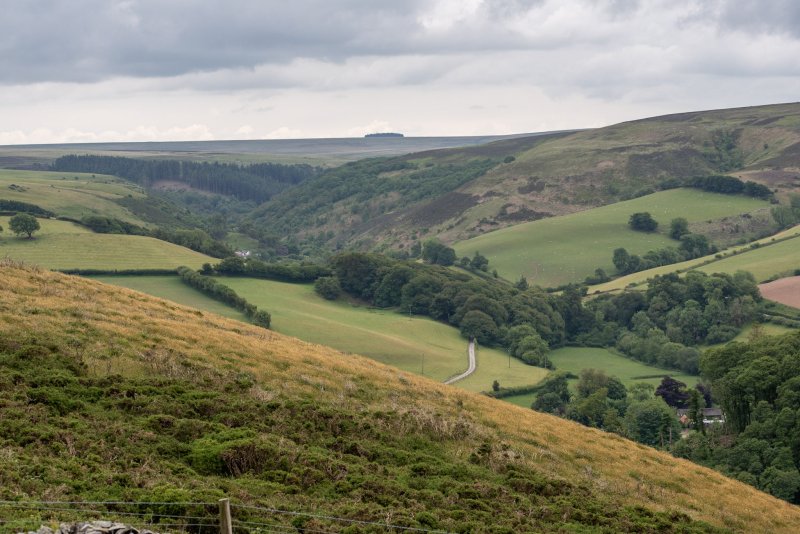

'The loneliness of the moor' … detail from The Man on the Moor by Thomas Mackenzie, from Elisabeth Southwart's Brontë Moors and Villages (1923)

Brontë Moors and Villages by Elizabeth Southwart

A generation earlier, Wrigley saw the moor as an enemy to be vanquished – a glowering menace, forever threatening to retake the cultivated land. For Hughes, the moor was a "desert", albeit one that had a "particular grip" on him. In his epic little prose book about the south Pennines, he's snarky about Saddleworth's "didactic and sentimental" poet laureate, Ammon Wrigley but both men understood that the moors were not to be accommodated by any Romantic notion of "landscape". Ted Hughes's fellow poet and friend spent several impoverished years in the 1960s garreted high above Saddleworth, on the edge of its dark moor, and in time he began to see the land with the beadiness of a native. She and Hughes shared with Emily Brontë a vision of these moors as not merely ruinous and bone-strewn, but places of transcendence – "a stage for the performance of heaven". In the volume's early editions his poems are accompanied by Fay Godwin's monolithic black-and-white photographs of the valley and its surmounting hills. In this volume of poetry he returns to the valleys and moors of his Calder Valley youth, reviving the land's myths and histories, and his own boyhood memories. Remains of Elmet by Ted Hughesįor Hughes himself, growing up in what was then the West Riding of Yorkshire, Tarka "gave shape and words to my world". In order to write about an otter, it was necessary to become one. His friend Ted Hughes, who met Williamson while living (with Sylvia Plath) in the shadow of Dartmoor, observed that the older man came to resemble his subject – "that fierce, fiercely alert, bristly look". To ease that anguish he sought out his fictional otter's haunts, including the "high cold moors" of Devon and Somerset, often sleeping outdoors. Tarka was rewritten 17 times, according to Williamson – "in what can only be described as anguish arising from a sense of insufficient knowledge".

A sheep's eye, for instance, "looks to be made in two pieces joined in the middle by a long black seam". But for all her flaws as a writer and a neighbour, she can, occasionally, startle you with her vigilance. In her early books she describes her new neighbours with the florid, prayerful aloofness of a missionary. Sent to Dartmoor on doctor's orders in 1903, Chase eventually came to refer to herself as the "Lady of the Moor".


 0 kommentar(er)
0 kommentar(er)
